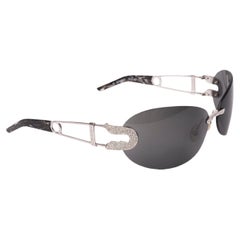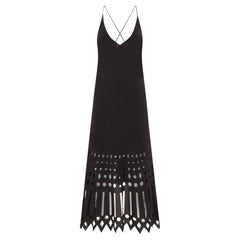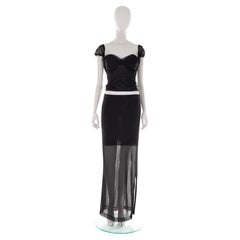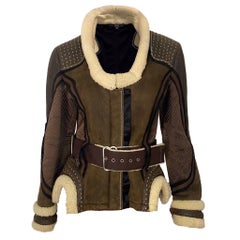Gianfranco Ferré
Remembered fondly with a nod to his architecture education as the “Frank Lloyd Wright of Italian Fashion” and the “Architect of Fashion,” Milanese designer Gianfranco Ferré spent a lifetime creating handbags, dresses, jackets and other garments and accessories that were defined by meticulous tailoring and crisp geometry. Designing the iconic Lady Dior handbag after being named artistic director at Dior during the late 1980s is only one of Ferré’s impressive achievements in the fashion industry.
Ferré was born in Legnano and was raised by his mother and two aunts. He studied architecture at Milan Polytechnic but had a love for fashion, and made belts and other items for female friends in his classes. He graduated in 1969.
Ferré’s accessories caught the eye of Rosy Biffi, who operated boutiques in Milan with her sister, Adele. He was encouraged by Biffi to create clothing, and soon began creating jewelry and accessories for Christiane Bailly and Walter Albini. The latter is an unsung hero of 20th-century fashion, while Bailly was part of a small group of prominent young stylistes who helped build a sterling reputation for French ready-to-wear fashion during the 1960s. Ferré’s work was photographed by Italian Vogue, and he secured commissions from the likes of Karl Lagerfeld and Elio Fiorucci.
Ferré appreciated other cultures and drew inspiration from his travels abroad. His most influential trip — a years-long stint in India — saw him bringing bright colors and patterns to his evening dresses and day dresses. While there he created a collection for the Genoa-based San Giorgio Impermeabili. Ferrè designed for brands such as Les Grenouilles and Baila, and met with Italian businessman and clothing manufacturer Franco Mattioli, who would become an important collaborator.
In 1978, Ferré and Mattioli became equal business partners in establishing Ferré’s own label, for which he designed women’s ready-to-wear and menswear collections in Milan. In 1983, he was named the first professor of fashion at the Domus Academy.
While teaching, Ferré won the Occhio d’Oro — Italy’s award for best fashion designer — six times. In 1986, he introduced his first women’s fragrance, his first couture and fur collections, and a new line called Studio 00l. A few years later, Bernard Arnault, owner of Christian Dior, appointed him artistic director.
It was unexpected for an Italian to be given the job at Dior — one of fashion’s most coveted roles — as that position traditionally went to French designers. There, as Marc Bohan’s successor, Ferré created luxurious and striking gowns that drew on his architecture studies in their sculptural forms while celebrating the long history of the legendary house. He revisited the nipped-waist silhouettes of Dior’s postwar years, and his work dazzled onlookers and exuded femininity. Ferré won the Dé d'Or prize in 1989 for his first collection at the label.
In the early 1990s, Ferré designed the Lady Dior handbag (prior to its 1995 debut, it was called the Chouchou). The boxy top-handled accessory soared to immense popularity after French first lady Bernadette Chirac gave a version in black leather to Diana, Princess of Wales. Each bag, which was eventually named for the Princess, is made from 130 pieces of leather and worked on by seven Dior craftsmen who spend at least eight hours perfecting it.
On 1stDibs, find a collection of vintage Gianfranco Ferré clothing, accessories and handbags and purses.







